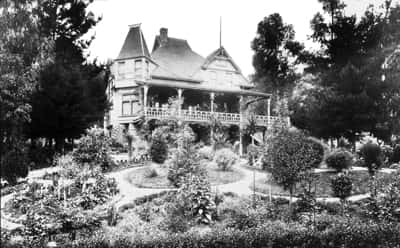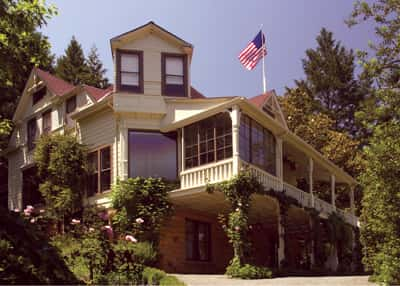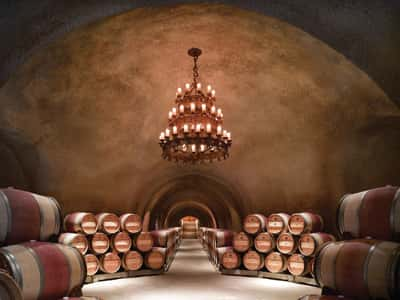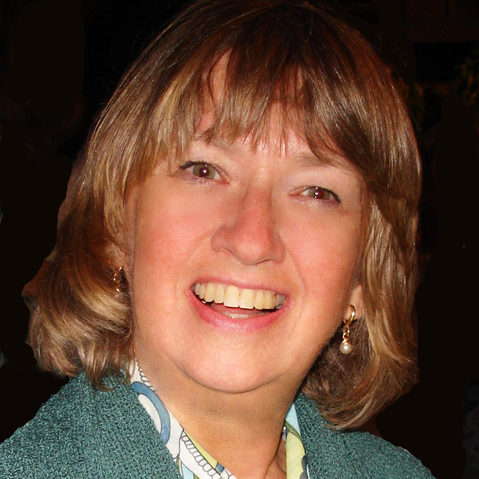By all accounts, Napa Valley’s fledgling wine industry was thriving in the 1800s. George Yount planted the valley’s first commercial vineyard in 1838, and Agoston Haraszthy, a Hungarian immigrant, brought vines from Europe and introduced new varieties of grapes in 1852. He went on to found California’s first commercial winery, Buena Vista in Sonoma, five years later. At the same time, the Gold Rush was creating new fortunes, and the thrill of winemaking beckoned. It was a pioneering era, and by the turn of the century, more than 140 wineries were established and thriving—but it didn’t last. In January 1920, the 18th Amendment to the Constitution took effect, banning the production, sale and transportation of intoxicating beverages throughout the United States. Prohibition forced all but a handful of wineries to close, and many owners simply abandoned their property. The wine industry was debilitated, leaving little more than ghost wineries and memories.
Schramsberg Winery
Jacob Schram was born in the Rheinhessen, a winemaking region in Germany, in 1826, and he traveled to New York when he was 16 and would later make his way to San Francisco. “He was a barber by trade,” says Hugh Davies, vintner at present-day Schramsberg Vineyards Winery, but he eventually moved north and worked with Haraszthy and Charles Krug, who established the first winery in Napa Valley in 1861. Schram followed with his own winery on the side of Diamond Mountain in Calistoga in 1862. Why he chose to start a winery on a hillside is a mystery, because it certainly created challenges. “Maybe he thought the quality of grapes would be superior,” says Davies. Farming hillside vineyards isn’t easy, however, and transporting wine in 500-gallon casks a mile downhill on an unpaved road and to the market would have been daunting.
 One advantage of the mountainside location was the opportunity to create caves for storing wine. Schram hired Chinese workers to dig the caves by hand with shovels and picks. “We see all the marks of the picks residing on the walls of the caves from that earlier time,” says Davies. He adds that the rock is volcanic and very hard, some of it impenetrable, making excavation by hand a remarkable accomplishment. Chinese laborers also worked in the fields, and Schram had a Chinese chef. They lived together in primitive quarters called the Chinese bunkhouse. Old photos also show European workers, who had their own separate ac
One advantage of the mountainside location was the opportunity to create caves for storing wine. Schram hired Chinese workers to dig the caves by hand with shovels and picks. “We see all the marks of the picks residing on the walls of the caves from that earlier time,” says Davies. He adds that the rock is volcanic and very hard, some of it impenetrable, making excavation by hand a remarkable accomplishment. Chinese laborers also worked in the fields, and Schram had a Chinese chef. They lived together in primitive quarters called the Chinese bunkhouse. Old photos also show European workers, who had their own separate ac commodations.
commodations.
People were drinking Schramsberg wines in New York and London in the 1880s, and by the end of the 19th century, the winery was producing the equivalent of 100,000 bottles of wine a year. “You can see in the buildings and pictures that they were successful,” says Davies. “I would love to go back in time and live in that era when everything was done by hand."
Schram died in 1905, leaving the property and business to his son, Herman. “Hearsay is that he was a bit of a gambler and lost some of his fortune before Prohibition,” says Davies. Phylloxera, a microscopic pest that destroyed 80 percent of Napa Valley’s winery acreage, devasted the vineyards, and the winery ceased operations in 1912. The property was sold, and it had several owners over the years, but none could return the winery to commercial activity, according to Davies, who points out that Prohibition, as well as the Great Depression and World War II, made it difficult to resume operations.
The winery lay dormant until 1965, when Jack and Jamie Davies, Hugh’s parents, purchased it with the dream of making a sparkling wine that could compete with French Champagne. Vestiges of the original winery remained, but more than 50 years had gone by, and the buildings were dilapidated. “Part of the winery still existed. The house existed but it was beat up,” says Davies, adding that bats occupied all the buildings. His father, Jack, had a Harvard MBA and was a successful businessman in San Francisco’s financial district, but he and Jamie gave up their comfortable lifestyle to move into an old house on a hillside at an abandoned winery and strike out in a new direction, despite the misgivings of Jamie’s father. A market for premium domestic sparkling wine didn’t exist, but the Davies were absolutely convinced they could be successful. Among their mentors were André Tchelistcheff, Beaulieu Vineyard’s legendary winemaker and a consulting winemaker at Schramsberg, and his son, Dimitri. Davies, who was born shortly after his parents bought the winery, remembers seeing the elder Tchelistcheff often. “He was a really enthusiastic guy, and he had a great palate,” he recalled. The Davies methodically planted their vineyards and persevered, eventually leading to success in creating the wine they envisioned. In 1965, they produced a Blanc de Blancs, becoming the first winery to use Chardonnay grapes to make sparkling wine. In 1972, Schramsberg Blanc de Blancs was served at the “Toast to Peace,” a state dinner in Beijing, which President Richard Nixon hosted for Chinese premier Zhou En-lai. It was the first time ever that an American wine was served at an official state or White House event. In April 2018, when French president Emmanuel Macron sipped Schramsberg Cre´mant Demi-sec—paired with a nectarine tart and crème fraîche ice cream—at a state dinner in his honor, it was the 87th time a Schramsberg wine appeared on the menu at a state function.
Far Niente
John Benson first made money during the San Francisco Gold Rush—in the mines and by selling alcohol to prospectors who traveled west to seek their fortunes. He eventually headed north, and in 1871, he purchased part of George Yount’s land grant, Rancho Caymus. Early records show that he planted 84 acres of Muscat of Alexandria grapes a year later and produced 15,000 gallons of wine in 1876. In 1885, he embarked on a new venture, establishing his own winery on the west side of Napa Valley, in present-day Oakville. He called it Far Niente Winery, which means “do nothing” in Italian, suggesting the pleasures of relaxing in Wine Country with no demands. He hired noted architect Hamden McIntyre to design a building for winemaking, and the result was a distinctive three-story stone structure against a rocky knoll that allowed a gravity-flow system for making wine.

Dirk Hampson, chairman and director of winemaking emeritus, explains that the top level of the building didn‘t have walls. Workers delivered grapes by wagon, traveling along a road on the knoll and crossing a bridge that took them to the top level of the building, where they dumped the grapes. The floor was higher in the middle so it drained to either side, and the grapes went into a crusher and then dropped into vats on the second floor. Among the remnants of the original winery is a metal wheel that was suspended from the ceiling on the second floor. A cable connected the wheel to a steam engine outside, providing power for the entire winery. Once made, the wine typically went out in barrels rather than bottles, and some of it didn’t go far. St. Helena reputedly had as many as 15 bars. “That was the culture that ultimately led to Prohibition,” says Hampson.
Benson never married, and when he died in 1910, he left ownership of the winery to his nieces, Virginia and Josephine Johnson. Virginia died in 1916, and Josephine sold the winery in 1917. When Prohibition took effect, the winery was shuttered, and it fell into disrepair until Gil Nickel purchased and resurrected the property in 1979. Nickel was from Oklahoma, where his family owned Greenleaf Nursery Company, one of the largest wholesale nursery growers in the country. He had a background in precision agriculture and believed that much of winemaking’s success depended on what happened in the vineyards. “He was fascinated by wine, and it was a field he wanted to get into,” says Hampson.
After 60 years of neglect, the winery was distressed and unsafe to enter, but Nickel tried to save as much as possible. He had the stonework repaired and saved the salvageable woodwork. He retained some of the original posts and beams that held up the second floor, did seismic work and replaced the roof with slate. The biggest change was to the third floor, which he had enclosed. Nickel lived in an apartment there for a time, but it houses offices now. He also built the first new caves in Napa Valley in the 20th century. Hampson says that when they were drilling in the first dynamite charges, they set a nickel on its side nearby. After the blast, it was still standing. “We knew doing the caves wouldn’t knock anything down,” he says.
 The property had 100 acres of vineyard land between the building and hillside, with Robert Mondavi’s vineyards surrounding them. Hampson says Mondavi believed he had the right of first refusal for Far Niente. It didn’t turn out that way, but Mondavi changed his tune years later. “Bob said he was pleased he didn’t get it,” says Hampson, because he was impressed by Nickel’s approach. Nickel planted Cabernet Sauvignon, Cabernet Franc and Chardonnay. “Over time, we discovered that Oakville is the epicenter for great Cabernet,” says Hampson, who arrived at Far Niente in 1982, in time for the first harvest. He observes that getting to know the land and what fits it best is part of the farming process, and changing tastes influence the planting, too. Up until Prohibition, Americans preferred wines that were sweet, such as those made from the Muscat grapes that Benson planted, for example, but they are no longer popular.
The property had 100 acres of vineyard land between the building and hillside, with Robert Mondavi’s vineyards surrounding them. Hampson says Mondavi believed he had the right of first refusal for Far Niente. It didn’t turn out that way, but Mondavi changed his tune years later. “Bob said he was pleased he didn’t get it,” says Hampson, because he was impressed by Nickel’s approach. Nickel planted Cabernet Sauvignon, Cabernet Franc and Chardonnay. “Over time, we discovered that Oakville is the epicenter for great Cabernet,” says Hampson, who arrived at Far Niente in 1982, in time for the first harvest. He observes that getting to know the land and what fits it best is part of the farming process, and changing tastes influence the planting, too. Up until Prohibition, Americans preferred wines that were sweet, such as those made from the Muscat grapes that Benson planted, for example, but they are no longer popular.
The appearance of the winery adds to the tasting experience as well. “These old buildings that were done with style and character, they were the cornerstone of a bigger statement that is seen within the rest of the development,” says Hampson. They’re part of an ethos of what fits, which comes from the history and the architecture. “There’s a consistency of doing it right. I think the visitors feel it,” he says.
Beaulieu Vineyard
Cream of tartar was Georges de Latour’s path to the wine business. He was born in Périgord in southeastern France in 1856, and when he was 26, he came to the United States to take advantage of the opportunities America offered for young entrepreneurs. He’d studied to be a chemist and found work in the cream of tartar business in California. By the mid-1890s, he had his own company, California Tartar Works, which was headquartered in San Jose with operations in Healdsburg and Napa. Cream of tartar is a byproduct of wine that is a result of the fermentation process, so he had the chance to become familiar with California’s winemaking network. He found Napa Valley especially appealing, with potential for premium winemaking, and he recognized the soil in Rutherford was ideal for growing winegrapes. In 1904, de Latour and his wife, Fernande, found a ranch they liked in Rutherford and sold the cream of tartar company to purchase the property. Fernande named it beau lieu, which means beautiful place in French. In 1901, they purchased more land and planted 80 acres of Zinfandel and Petite Sirah grapes, establishing a pattern of acquiring property that continued for decades. In 1904, Beaulieu Vineyard was officially incorporated, and several Roman Catholic priests were among the original stockholders, including J.L. Hanna, who later became archbishop.
Phylloxera had made its way into California vineyards in the 1870s, and it became an increasing concern for de Latour. His family in France had lost their grapevines to the pest years before, and he knew California vintners would eventually have to replace all their plantings. He began importing vines that were grown and grafted onto phylloxera-resistant rootstock in Europe and offered them to California growers. In addition, he started a nursery in Paris to produce his own grafted vines. He brought in hundreds of thousands of them, which traveled by ship from Le Havre to New York and then went into railcars for the trip west. It was an endeavor that showed de Latour’s business acumen. “The vine importation business was an immediate and enduring success and an outstanding example of how he was able to do something for his fellow man and make money at the same time.” says Rod Smith in his book, Beaulieu Vineyard and the Rise of Napa Valley, Private Reserve.
In 1904, de Latour obtained a warrant to produce sacramental wine and started making wine for the Catholic Church with grapes from Wente Vineyards in Livermore. It was so lucrative that he opened an office in New York in 1910 to serve the trade. Beaulieu Vineyard became the first winery to supply churches across the country. With a business in altar wine well established, de Latour was able to buy property and equipment at bargain rates when Prohibition became a reality, and as other wineries closed, Beaulieu continued to grow. “Beaulieu Vineyard roughly quadrupled in size during Prohibition and was producing over 1 million gallons of wine annually by the time Prohibition was repealed in 1933,” says Trevor Durling, chief winemaker and general manager. Thus, Beaulieu Vineyard emerged not only intact, but also stronger.
In 1948, de Latour hired Russian winemaker and enologist André Tchelistcheff, who became America’s most influential winemaker and was responsible for major innovations in the industry, including temperature-controlled fermentation and malolactic fermentation for red wines. “André Tchelistcheff completely revolutionized the Napa Valley Wine industry, and his influence began very early in his career at Beaulieu Vineyard,” says Durling. Among his contributions, he emphasized the importance of sanitation and the need for the knowledge of microbiology in winemaking. Durling adds that Tchelistcheff also introduced some winemaking techniques that are taken granted for today, such as the use of small oak barrels for aging.
Not long after his arrival in California, Tchelistcheff oversaw the bottling and release of the 1936 vintage, which was the first Cabernet Sauvignon to get international recognition. In 1939, Georges de Latour Private Reserve Cabernet Sauvignon won a Gold Medal at the Golden Gate International Exposition. A premium wine, it had a hefty price tag for its day — $1.50 a bottle. This year, Beaulieu Vineyard celebrates the 80th anniversary of the de Latour Private Reserve with the release of the 2016 vintage. “At Beaulieu, we never forget where we came from and what led us to what we are today,” says Durling. “It’s important to be knowledgeable and aware of who came before us and what they did, but also to learn from our past to challenge ourselves to always push ahead with that same pioneering spirit.”
Napa Valley’s ghost wineries and those that weathered difficult times reflect an era of vision and a passion for making great wine that endures. Hugh Davies recalls his mother talking about how fortunate she was to be attached to something that started long before she arrived and would continue long after she’d gone. “A lot of us today would say the same thing,” he says. “It’s part of our DNA as winemakers to be attached to history.”





